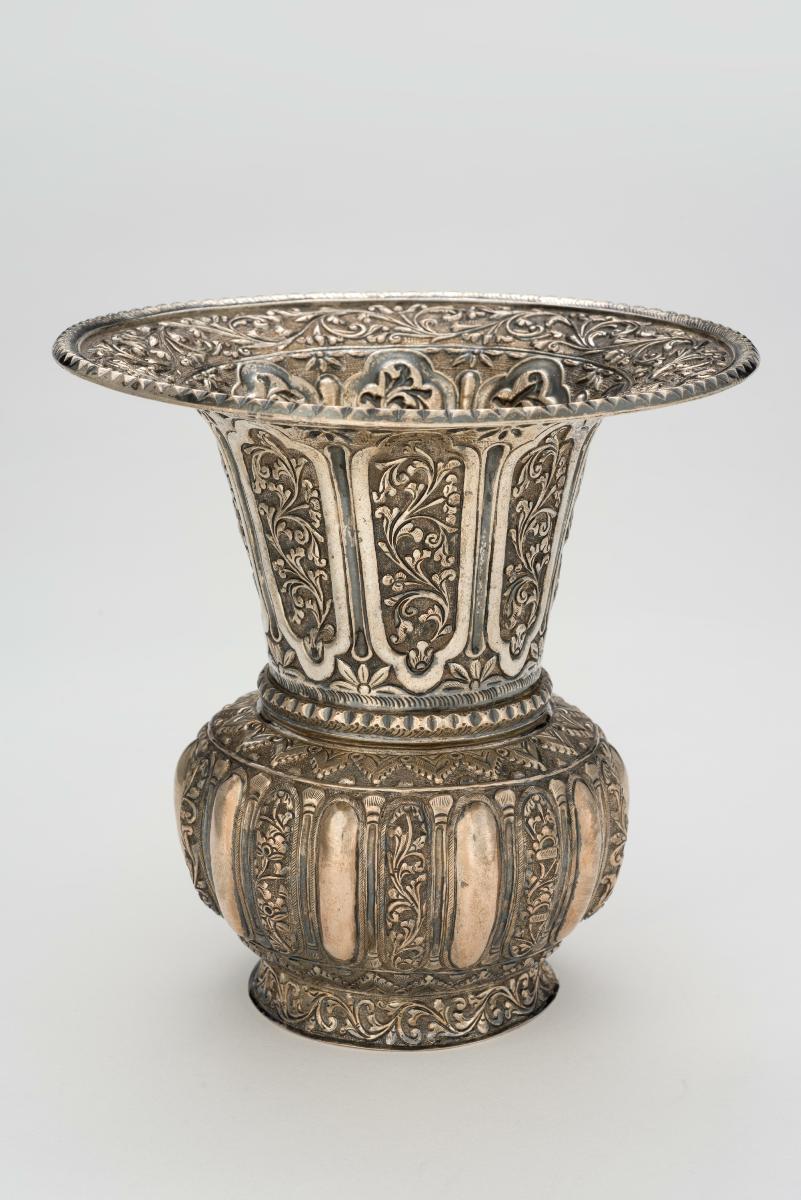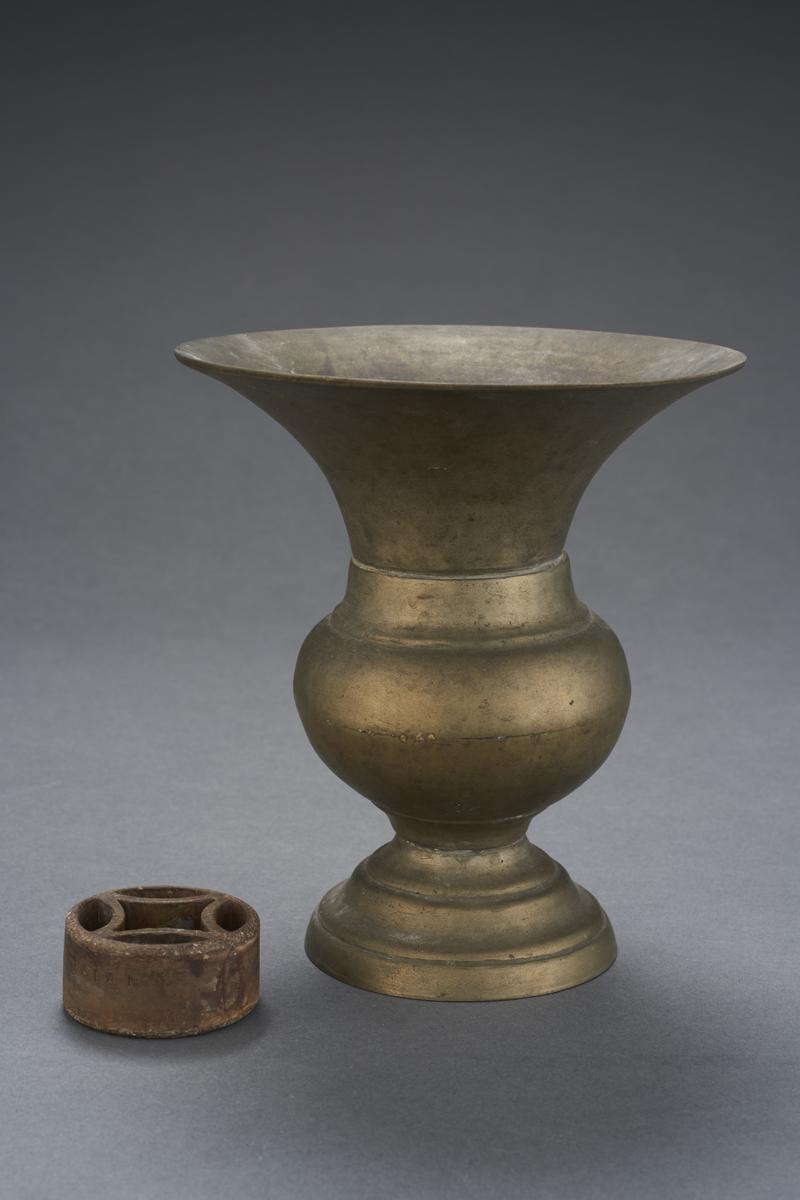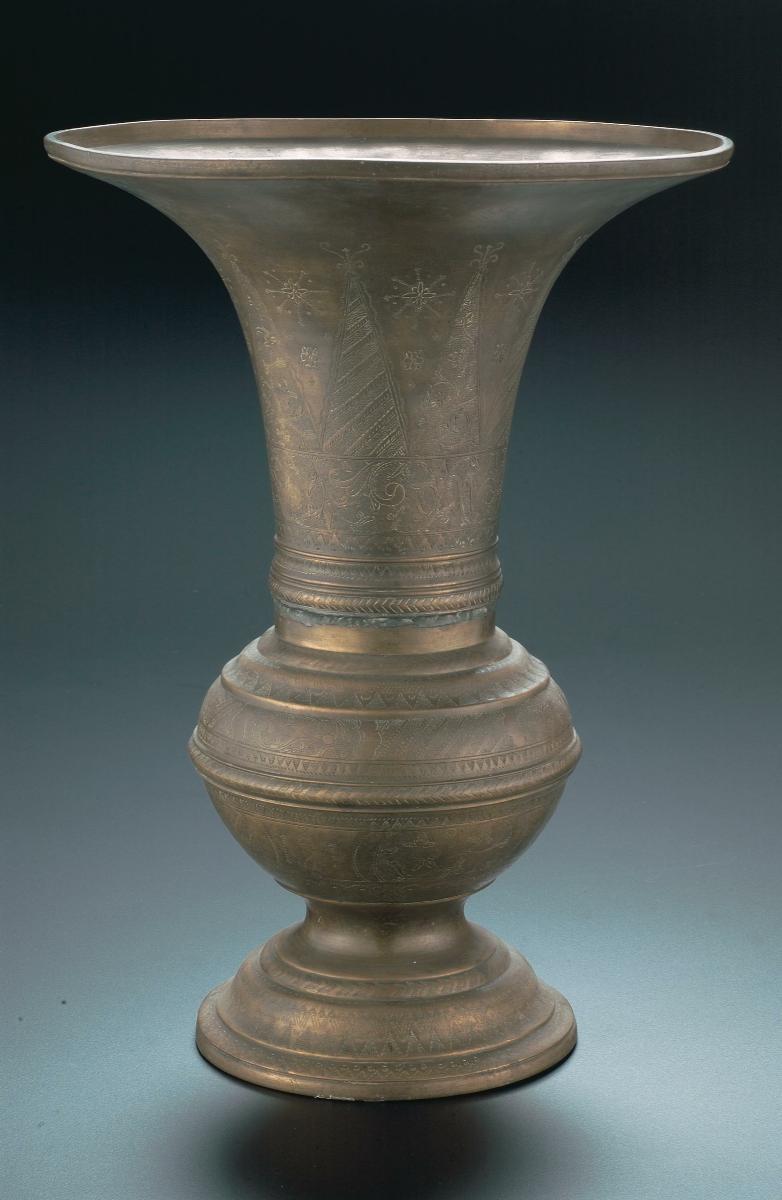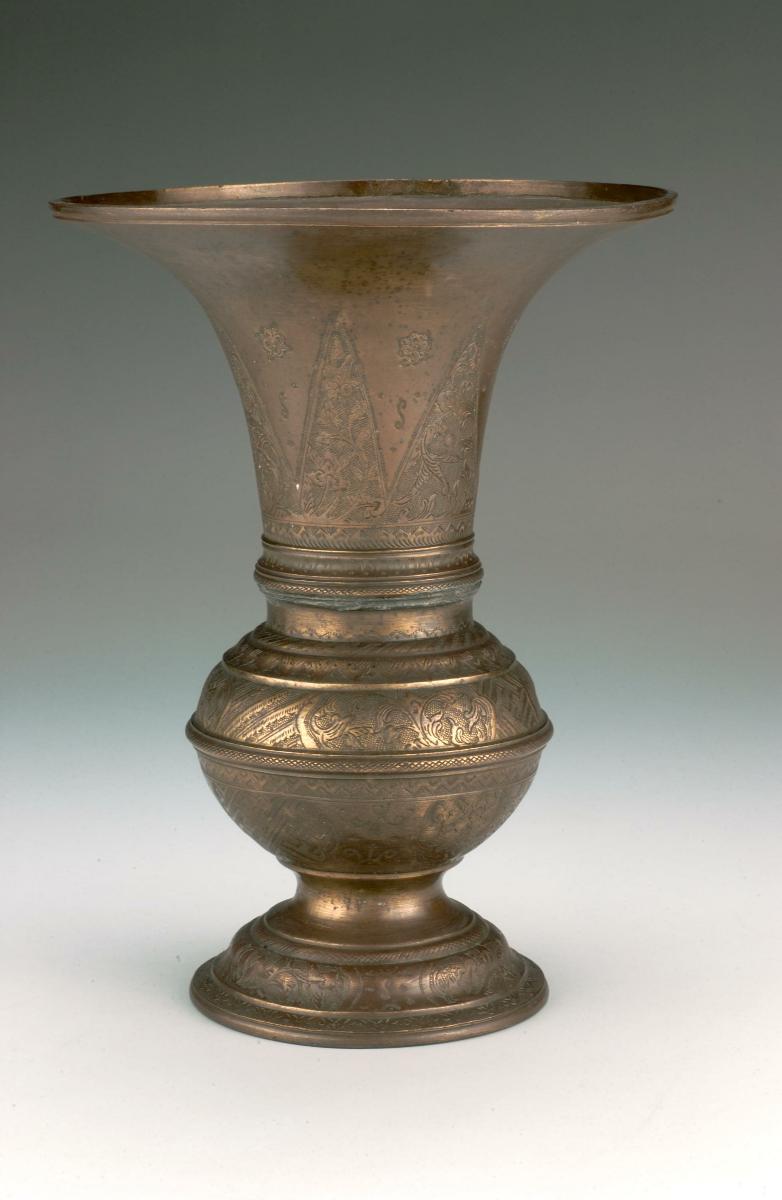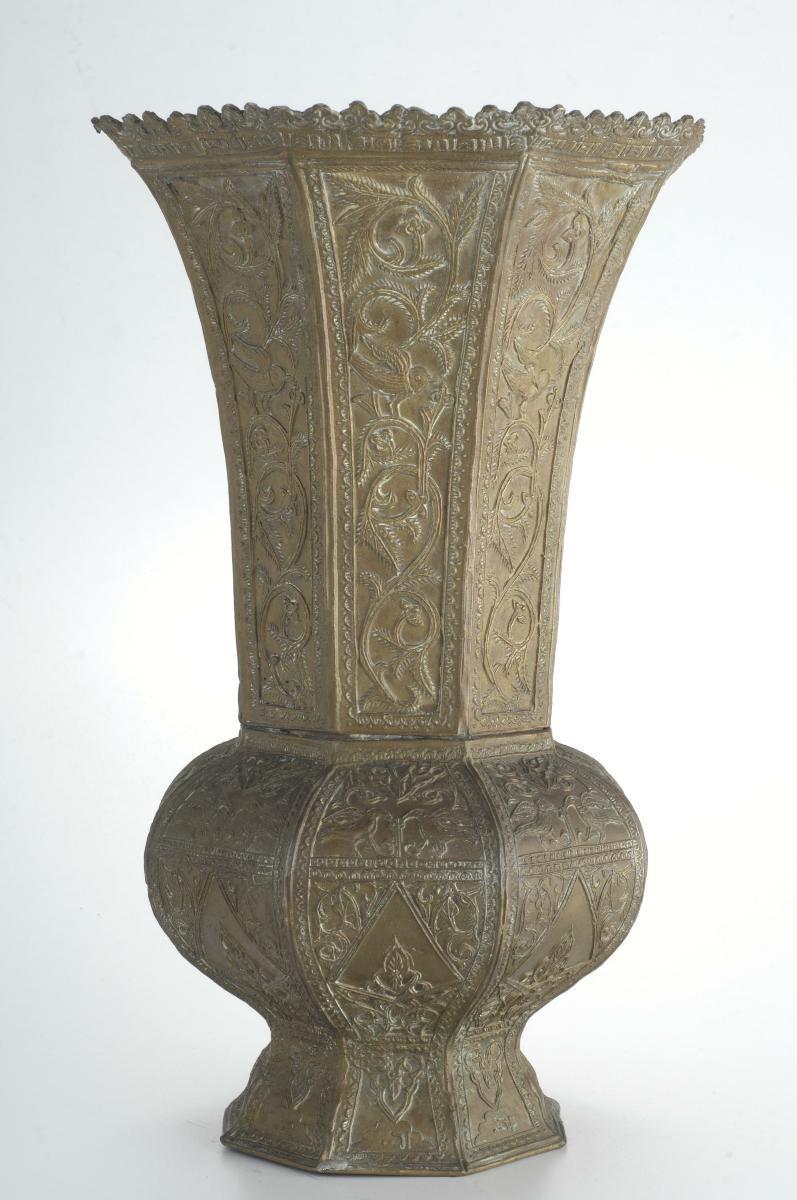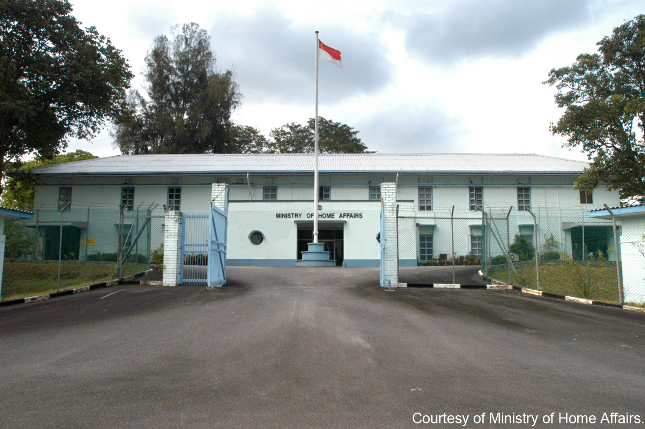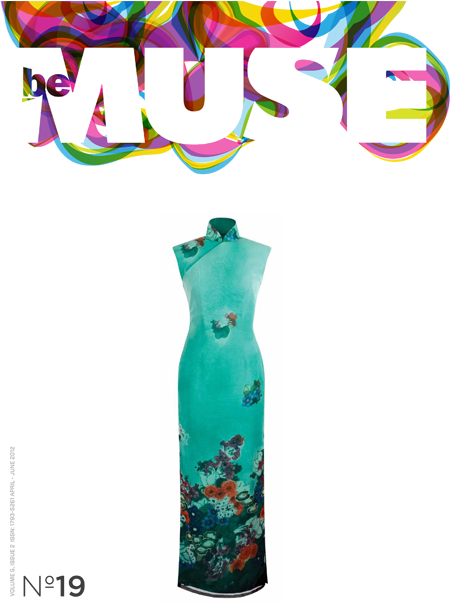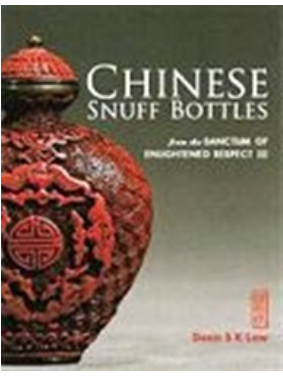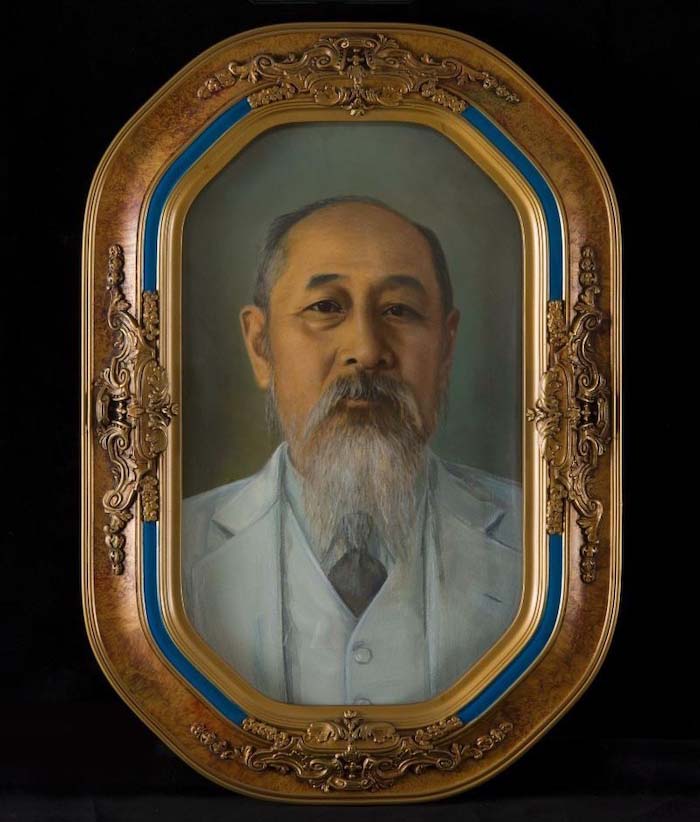This large spittoon has a wide, trumpet-shaped mouth and a bulbous body. It is heavily decorated with repoussé scrolling vines and flowers. The decoration is typical of Indonesian silver of the 19th century, which is a complex amalgamation of European, Indian, Islamic, and Southeast Asian motifs and forms. The spittoon may have been made by Chinese silversmiths, who worked in Java and Sumatra from the 17th century. Like the majority of silver made in the Dutch East Indies, it is unmarked. Indonesian, Chinese, Muslim, and Dutch Eurasian silversmiths were not required to hallmark their work in areas administered by the Dutch, unlike silversmiths in British-controlled India. Spittoons were essential throughout much of Southeast Asia because of the popularity of chewing betel, the nut of the areca palm tree, which produces spittle. Betel chewing was adopted by the Dutch soon after their arrival in Indonesia in 1595. They commissioned betel containers and accompanying objects like spittoons, which they incorporated into their dealings with local elites. This example may have been made for the Dutch, although fine repoussé silver pieces like this were also produced for the domestic market.




